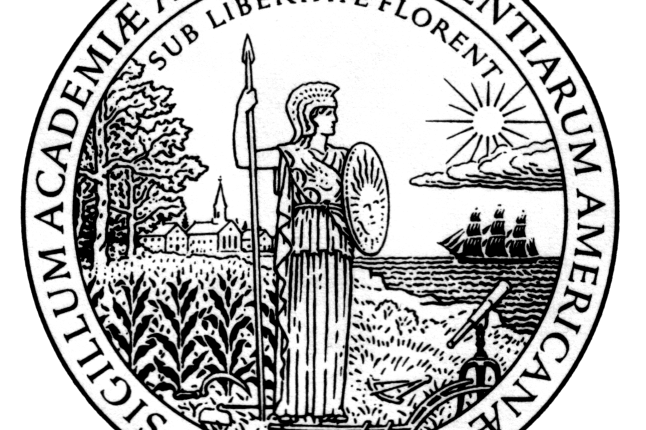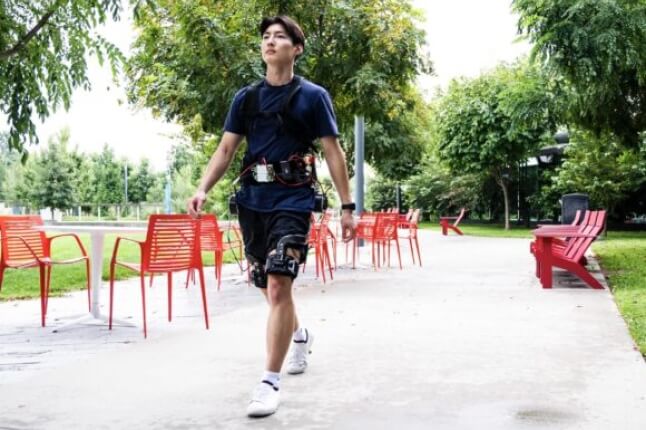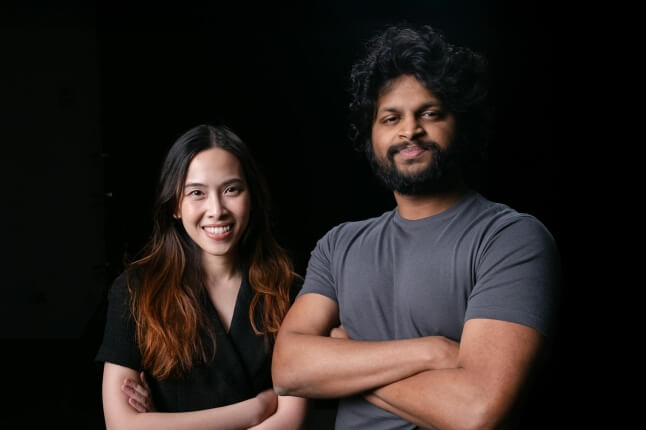News
The CS 50 Fair is an epic display of final projects in SEAS' introductory computer programming course. (Photo by Jon Chase, Harvard Staff Photographer.)
For anyone hankering to join an upside-down basketball fantasy league, Harvard seniors Henry Clausner and Neal O’Hara can help.
The government concentrators developed the software underlying the “Bad Basketball” league during a marathon, 21-hour session closing out a semester’s work in the course CS50, which provides an introduction to computer science for budding programmers as well as for students, like Clausner and O’Hara, whose goals lie elsewhere.
“It’s the future. Everyone’s taking it, everyone’s learning it. It’s so necessary for so many professions,” Clausner said of the coursework.
Clausner and O’Hara, whose “Bad Basketball” league urges participants to draft the worst team in modern history, showed off their creation on Monday in the annual CS50 Fair in the basement of Harvard’s Northwest Laboratory Building.
Laptops clogged tables that filled the expansive space while students stood nearby, ready to explain and demonstrate the computer programs, Web pages, and mobile apps developed during a semester of learning and doing.
The fair, an end-of-semester tradition for CS50, had something for everybody: free candy, popcorn, and cotton candy; thumping music; a video game on a giant touchscreen; even squeezable stress balls for anyone the hubbub made anxious.
“Our directive to [the students] isn’t so much innovation as it is problem-solving, creating something of interest to them that addresses a need they or someone else has or, as we like to say, changing the world,” said David Malan, the course’s lead instructor. “Any of these are valid projects.”
CS50 is Harvard’s second-largest undergraduate offering, Malan said, with some 700 students taking it this fall, including some from Harvard’s graduate schools. The course has more than 100 staff members in it and, in addition to those taking it as a traditional campus course, another 150 took it through the Harvard Extension School. Some 150,000 enrolled worldwide for last year’s online offering through Harvard’s collaborative edX venture.
The course’s attraction, Malan said, is that students are “interested in understanding the increasingly technological world around them. I think it’s a very empowering field. It allows you to use a computer you’ve had on your desk for years to actually create something, not just use something someone else created. I think it’s a lot of fun. It’s a very visual world, a very audio world, a very interactive world, and it’s fun to make things.”
The fair, which ran through the afternoon, drew hundreds, perhaps thousands to the Northwest Lab. By early afternoon, Malan said, the crowds appeared similar to last year, when 2,200 people visited.
Beyond Monday’s flash was plenty of substance. Projects ranged from the functionality of interactive campus maps created by freshmen Laura Chang and Avinash Saraf to the musically rocking “DJ50: Music You Can See"...
Read the entire article in the Harvard Gazette
Topics: Computer Science
Cutting-edge science delivered direct to your inbox.
Join the Harvard SEAS mailing list.



